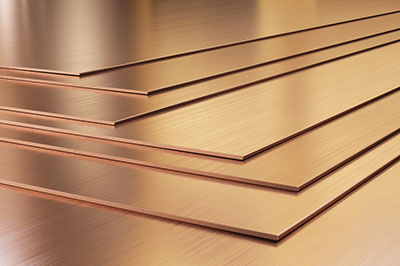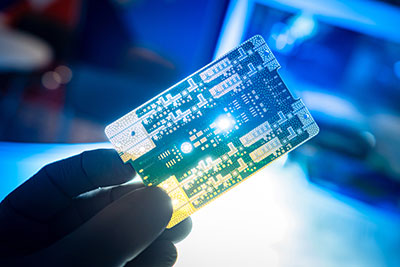What is a photogate? We will define this device in the article below.
But let’s say you want to measure how long an object takes to cross a path. Or you want to capture the specific time an object passes through an area.
You can use a stopwatch, but the human touch introduces reaction-time errors.
It would be better to use some automation, and a photogate does that. Let’s look at how this device works.
Contents
- What Is a Photogate?
- Photogate Advantages
- Typical Photogate Modes
- Photogate Applications
- High-Speed Photography
- Nature and Wildlife Photography
- Physics/Scientific Experiments
- Stop Motion and Creative Photography
- Photogate vs. Motion Sensor
- Factors To Consider When Using a Photogate
- Light Conditions
- Alignment/Positioning
- Wrap Up
What Is a Photogate?
A photogate is a light sensor that detects the presence or passing of objects and their velocity when they pass through. This detection can trigger a response or action.
The detection usually occurs using a receiver placed on the opposite side of an emitter with the defined detection area between the two.
During operation, the emitter projects an infrared light beam that the receiver detects on its end.
If an object passes through the detection area, it interrupts this light signal. This interruption sends a signal indicating an object passing through the gate.
Photogate Advantages
This operation mechanism has several advantages, including the following.
- Precision timing: The triggering when an object moves through the gate can have a response time as low as five seconds. So the corresponding action that gets activated using this trigger occurs with precision timing consistently. For instance, if you want to capture a photo of a bird in flight, a photogate will get it immediately after it crosses the infrared line.
- Automation: Let’s use photography as an example. If you use a photogate as the trigger, you eliminate the human input. This setup automates the photo-taking process.
- Versatility: Photogates are not for photography only. Scientists can also use them for experiments to determine variables like velocity and transit time.
Typical Photogate Modes
Some of the typical modes in photogate sensors include:
- Stopwatch mode: This mode gives an accurate timing of events with a precision as high as one-hundredth of a second (from 0.01-59.99 seconds).
- Frequency mode: Gives the frequency of any object that interrupts the beam of light repeatedly.
- Interval mode: Uses one or two photogates (photogate A and photogate B) to measure the time from one, two, or three locations. The measurement can also use the time between the pair of photogates to experiment on speed/acceleration.
- Count mode: A counter activates when any object interrupts the light beam.
- Period mode: Counts repetitive motions with high accuracy.
Special Offer: Get $100 off your order!
Email [email protected] to get started!
Photogate Applications
Here are the primary applications of photogate systems.
High-Speed Photography
Photogates come in handy in photography involving fast-moving subjects.
For instance, in racing sports, most organizers place large photogates across the finish line or at specific checkpoints.
When runners cross this point, the photogate will trigger a camera to capture that precise moment.

A detailed photo showing the explosion of a lightbulb
Ball sports like soccer and football can also use these devices to trigger the camera or VAR system if the ball crosses the goal line or goes out of play.
Nature and Wildlife Photography
Wildlife is unpredictable and uncontrollable, so capturing animals at the right moment is even more difficult than capturing sports moments.
Photogates can automate wildlife photography, enabling you to record quick or elusive animals.

A close-up shot of a shining green Caribbean hummingbird sucking nectar from a flower
And since there won’t be a human element in the vicinity, the animals won’t fear going into the subject area.
Physics/Scientific Experiments
Photogates are common in science labs, where they help in accurate event timing within physics experiments. These events include:
- Pendulum periods (pendulum experiments)
- Experiments on speed (acceleration of gravity using devices loaded with different masses)
- Displacement of objects
- Impulse/change in momentum
- Projectile motion
- Rolling objects

Newton cradle pendulums with steel kinetic balls
Stop Motion and Creative Photography
Instead of capturing the images manually, you can use a photogate to automate picture capturing for stop-motion animation.
Also, you can use the device to snap unique and creative photos, such as raindrops and colliding particles.

A macro photo of water drops falling into a pool of water
Photogate vs. Motion Sensor
Motion sensors have a wider detection area than photogates and rely on technologies like microwaves, passive infrared, ultrasonic waves, cameras, and gesture detection for detection.

A motion sensor with a light detector
But photogates have a narrower detection area, making them more accurate. And they only use a beam of light (infrared) to detect objects.
So they are ideal for applications requiring high precision, like high-speed photography.
Also, you can use them to measure the speed of projectiles in motion and the rotational data of smart pulleys.
Factors To Consider When Using a Photogate
Although photogates detect and measure with precision, consider these factors when using them.
Light Conditions
Photogates rely on light to detect interruptions on the photodetector.
So if the ambient light is too bright, it will dilute the laser beam, rendering it useless for the detection end.
You might need adjustments to correct or compensate for such errors.

A digital camera sensor (photodetector)
Alignment/Positioning
Light only travels in a straight line, meaning the alignment between the infrared transmitter and receiver must be perfect.
So if the photogate comes as separate components or if you are building one from scratch, ensure the emitter is directly opposite the receiver.
But if buying a complete all-in-one unit, it should come pre-aligned. So this factor should not worry you.
Wrap Up
The most significant advantage of photogates is the precision timing with automation.
So they are a photographer’s best friend because they can enhance creativity by enabling you to capture beautiful natural effects.
And they are ideal for science too.
That’s it for this article. Comment below to give your feedback or sentiments.
Special Offer: Get $100 off your order!
Email [email protected] to get started!






